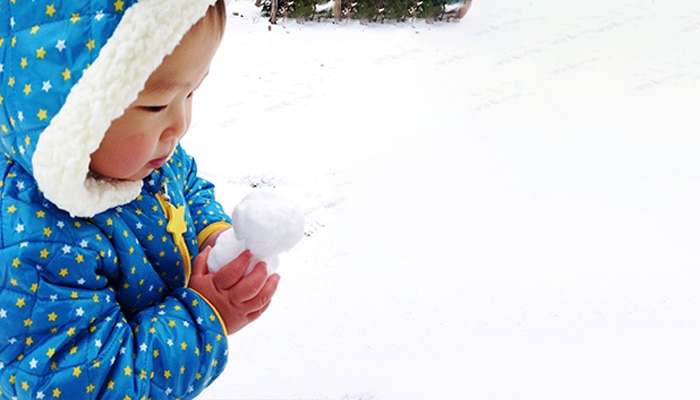While we believe that the books and resources recommended may be of value to you, keep in mind that these are suggestions only and you must do your own due diligence to determine whether the materials are appropriate and suitable for your use. PNC has no sponsorship or endorsement agreement with the authors or publishers of the materials listed.
WINTER

Melting Ice
Children will experiment with melting ice.

Lesson Objective
Children will perform an experiment to determine which substance will work best to melt ice.
ScienceArtMusic
What You'll Need
Note: This is a two-part lesson to be conducted over 2 days.
Part 1
- 7 oz. plastic cups – 1 per child
- Small classroom objects, such as marbles, dice, small plastic toys – 1 per child
- Large trays – 2
- Pitcher or ladle – for pouring water
- Water
- Proximity to a freezer (or outside space if overnight temperatures will dip below 32° F)
Part 2
- Coarse salt – 1 shaker per every 2 children
- Cold water – ½ cup per child
- Warm water – ½ cup per child
- Pipettes – 1 per child
- Plastic plates – 1 per child
What To Do
Part 1
- Tell the children they will be performing an experiment to explore what works best to melt ice.
- Distribute cups to the children.
- Assist the children with pouring water into the cups, making them two-thirds full.
- Allow the children to select one of the small classroom objects and drop it in their cup.
- Place the cups on a tray and transfer the cups to the freezer, or if outside temperatures are predicted to dip below 32° F overnight, place the tray of cups outside.
Part 2
- Take the cups from the freezer, or bring them inside and remove the ice blocks from the cups.
- Distribute one ice block on a plate to each child.
- Distribute pipettes, salt, and cups of water to the children.
- Instruct the children to use the pipettes and the cold water to try to melt the ice. Give them a few minutes and discuss if it is working.
- Next, have the children try using the pipettes with the warm water to melt the ice. Give them a few minutes and discuss if it worked better than the cold water.
- Last, have the children sprinkle some salt on their ice cubes. Allow the salt to sit for a few minutes and discuss if it worked better than the warm water or the cold water.
- Allow the children to use the substance they felt worked best until the toy can be removed from the ice.
- Discuss the children’s findings.
Resources
Home School Resources
Home educators: use these printable lesson PDFs to teach this lesson to your home schoolers. They're available in English and Spanish.
Content Provided By
Common Core State Standards Initiative – These lessons are aligned with the Common Core State Standards ("CCSS"). The CCSS provide a consistent, clear understanding of the concepts and skills children are expected to learn and guide teachers to provide their students with opportunities to gain these important skills and foundational knowledge [1]. Visit the CCSS


